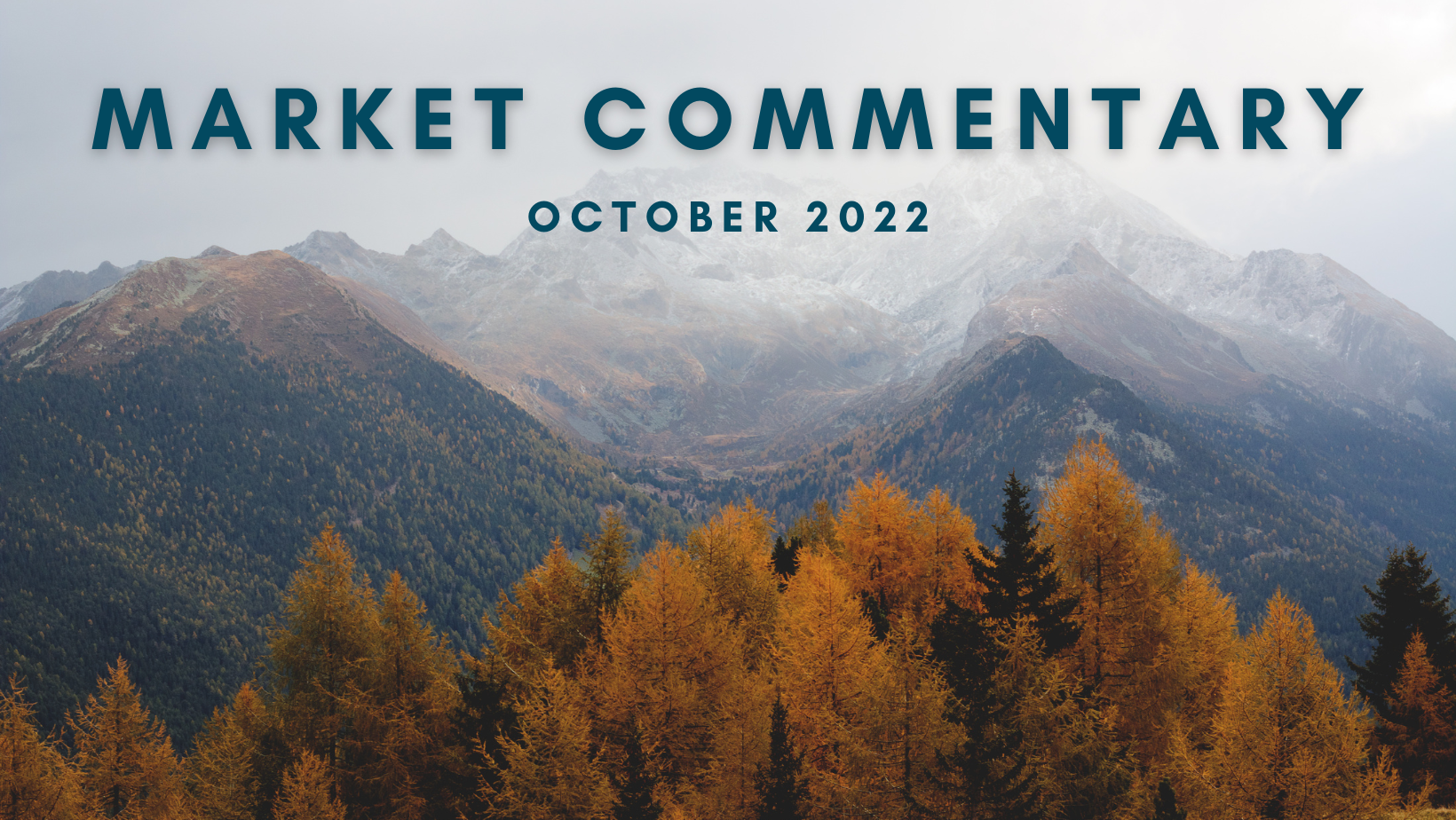
Market Commentary: October 2022
As I sit down to write this letter a few days after the federal reserve increased rates to 3.25%, I think it’s important to remind ourselves of why we save and invest. While this tightening policy continues, we will increasingly see companies, countries, debt, and currencies showing stress and strain. By the time you read this the situation will certainly be different than at the time I am writing. So, with fear, uncertainty, and doubt always present in our world how are we supposed to invest and why do we invest in the first place.
At the very basic level we all have a certain amount of time, talent, and resources. How we spend these are the story of our lives. Many of us start or buy into the company we work at aligning our time, talent, and resources. This can be some of the most rewarding investments we make both from a satisfaction perspective and, if our endeavors are successful, from a monetary standpoint. When it comes to saving and investment, we take a portion of our resources and expect to receive a return greater than if we did nothing. For example, let’s say we have an additional $100 after our primary needs are meet. We could put that under our mattress and in 10 years we will still have that $100 it will just buy us less that when we put it there because of inflation. Yes, even the doing nothing option has the risk of losing purchasing power. You can put it in the bank and get an amount of interest that until recently has been small but does have little risk. Now you can step up the risk and buy an individual bond that has a higher interest but does carry more risk. You can step up the risk again and buy stock in a company and the return potential also goes up. All of these options come with the expectation of having a higher value than the $100 at the end of the 10 years but not a guarantee because of risk. At any point in time any of these options could drop in value below the $100 except for the savings account. In the academic world this concept is called risk premia. It is the expected return in excess of doing nothing.
Now that we have established a basic framework of why we invest, let’s transition to how we should invest. Ideally, we want to buy and hold a basket of the assets that have the highest expected risk premia that are not dependent on each other to generate their returns. These are concepts called diversification and uncorrelation. Let’s say you buy $50 of Ford stock and you expect that over that 10 years you expect it to be worth $100. Would it be better to buy GM with the other $50 with an expected value of $90 in 10 years or Verizon with the same expected $90 in 10 years? Most likely it would be better to go with Verizon given that they are not in the same industry and should over time not be dependent on one another. In the portfolios that we develop we use a mix of four asset classes. Stocks, bonds, real assets, and managed futures. Historically each of these assets have shown a higher expected return than not investing and do not move together over long periods of time. The time period we are in right now is a bit of an exception given that stocks and bonds have moved largely the same direction this year. Because of this higher correlation to each other we have been holding less stocks and bonds than normal and more managed futures and cash. We are patiently waiting for the situation to change, but until then we will continue to have a more defensive posture.
Thank you for allowing us to coinvest with you and if you know of anyone who you feel our services could help please let us know.
DISCLOSURES:
Please remember that past performance may not be indicative of future results. Different types of investments involve varying degrees of risk, and there can be no assurance that the future performance of any specific investment, investment strategy, or product (including the investments and/or investment strategies recommended or undertaken by Longview Financial Advisors, Inc.), or any non-investment related content, made reference to directly or indirectly in this newsletter will be profitable, equal any corresponding indicated historical performance level(s), be suitable for your portfolio or individual situation, or prove successful. Due to various factors, including changing market conditions and/or applicable laws, the content may no longer be reflective of current opinions or positions. Moreover, you should not assume that any discussion or information contained in this newsletter serves as the receipt of, or as a substitute for, personalized investment advice from Longview Financial Advisors, Inc. To the extent that a reader has any questions regarding the applicability of any specific issue discussed above to his/her individual situation, he/she is encouraged to consult with the professional advisor of his/her choosing. Longview Financial Advisors, Inc. is neither a law firm nor a certified public accounting firm and no portion of the newsletter content should be construed as legal or accounting advice. A copy of the Longview Financial Advisors, Inc.’s current written disclosure statement discussing our advisory services and fees is available upon request.